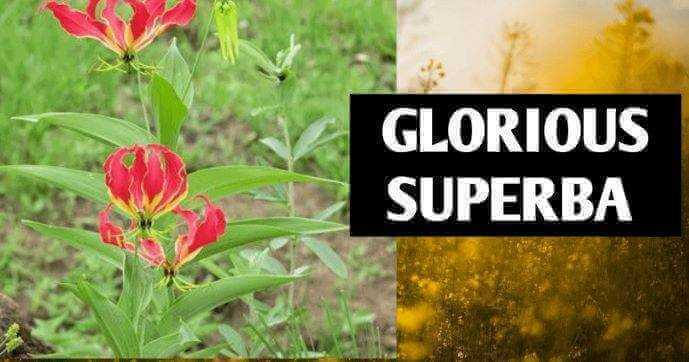Gloriosa is a family of kolchikesi or Colchicaceae. Gloriosa Superba is also called wild navel or Gloriosa or Flame Lily or Climbing Lily. Flame Lily is a medicinal plant in the family of Colchicaceae of flowering plants. It grows in all areas in our country.
Read More:-
Gloriosa Superba Important Facts:-
- Gloriosa is an annual plant that can be grown in all gardens.
- It grows based on adjacent plants and trees.
- Gloriosa Superba leaves are opposite to the stem of the plant.
- In the starting, these leaves are in semi-heart shape.
- The corners of the leaves are like wire and are suitable for holding the adjacent trees.
- The flowers of the Gloriosa Superba have a unique beauty with many colors.
- And the flowers will remain on the plant for at least six to seven days.
- Gloriosa flowers are beautiful, large, and these leaves are long and curved back like fire keys.
- The weight of their pollen grains is up to 13 cm to 14 cm.
- The attractive fascicles will be staying at the leaf green at the peduncle, gradually yellowish, and the stalks are entirely reddish.
- Gloriosa roots are 15 cm to 30 cm long, and the stems of these plants grow as strong wires up to 3.5 meters to 6 meters.
- And the size of these fruits is 7 to 8cm long and has 50 to 60 seeds.
- Color of these seeds like orange to reddish.
Glorious Superba Uses:-
- Glorious Superba seeds contain an alkaloid, which is called colchicine.
- Flame lily is used in gout diseases.
- And the beets of the glorious are used to treat chronic ulcers, piles, abdominal pain, itching, body burns, leprosy.
- The roots of these plants are used to treat gonorrhea, abortions.
- Glorious plants are also used to treat snake and scorpion bites.
- These plants eliminate abdominal germs.
- It is extensively used as a laxative to aggravate hemorrhoids for abortions.
- Glorious is helpful for skin infections, nerve pains, and upper ulcers.
- It is used as a tonic for the body and drains the glue from the rectum.
- And these roots are widely used in medicines.
- It is also toxic so that, it should be used in necessary doses on the physician’s advice.
Post Disclaimer
The information presented in this blog post is for educational and informational purposes only. While every effort has been made to ensure the accuracy of the content, the historical interpretations and perspectives shared here are based on publicly available sources and are subject to individual interpretation.
The author does not claim to be an authority on the subject, and readers are encouraged to conduct their own research and consult academic sources for a more comprehensive understanding. The views expressed in this post do not reflect the opinions of any official institutions or organizations.






